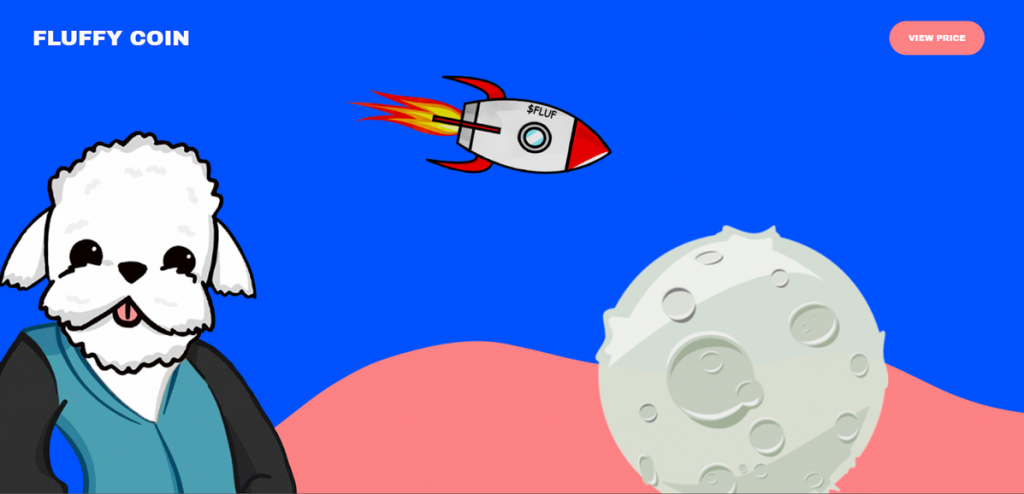Today, I want to talk about crypto — specifically, launching crypto coins, what’s involved in the process, and what those coins are going through. We’ll also talk about what’s going on in the blockchain industry.
The Fluffy Coin Experiment
I came across a great video from a guy called Biaheza — a young guy doing some interesting projects. In one particular experiment, he launched a crypto coin of his own.
This video shows him going through the script of an existing coin. He copied and pasted it, changed some variables, and voila: he successfully launched a new crypto coin called the Fluffy Coin.

Before I continue, remember that this project was done to show how easy it is to launch a crypto coin, along with what the backend of that looks like.
Again, remember this: Biaheza didn’t do this project as a get-rich-quick scheme.
Now, what’s interesting is that crypto coins are often touted as the “next big thing” — the next life-changing environment. And people get on board because these coins seem to have huge founding teams with big visions.
Going back to the video, Biaheza’s project was a simple copy-and-paste job that allowed him to launch a coin within minutes. From there, he created a website that convinced people to invest in the coin pretty quickly after launch.
After launching the coin, Biaheza generated batch wallets. He moved the coins into these batch wallets. Essentially, he created 100 coins and put each coin in 100 wallets. That way, it looked like a hundred people had the coin. From there, he spun up a marketing website with some fake people and fake names.
Who Would Buy This Coin?
Here’s what’s interesting: Biaheza told his followers not to purchase the coin because, again, it wasn’t meant to be a real investment. The coin is a complete meme.
However, the coin saw a lot of transactions happening, and Coinbase picked it up and listed it on its platform. While this isn’t inherently bad, the fact that Fluffy Coin was listed on Coinbase brings credence to it.
So, even though Fluffy Coin was launched as a test coin, it’s now available in the marketplace. It looks like any other investment that anyone can invest in.
For Biaheza, this was only an experiment. But if you look at the coin’s chart, it paints the coin as an investable asset. This looks like any chart you can see on the stock market.

There’s is nothing behind this coin. It was made by copy-pasting another coin’s script.
This was a very simple script, running on some very simple things — apparently, the whole thing is now worth over $2 million.
The Real Value of Crypto Coins
One of the more scathing things that Biaheza talks about in his video is the fact that people launch coins with some sort of vision — they put a “founding team” behind the coin and sell the vision to customers.
The customers, on the other hand, are buying nothing.
The coin’s “founders” then can pull out the rug from underneath them and take their money, cashing everything out before the coin’s value crashes.
This isn’t new, and it’s certainly happened before. The best example is probably how people bought tulips back in the day, where they bought the tulips just because others were buying them at a higher price.
Yes, blockchain is an interesting technology. It’s a truly interesting tool that has great use cases.
Yes, it can create crypto coins — but those coins are inherently worthless.

The use of blockchain to create crypto coins is heavily unregulated, and banking systems face a lot of problems because of that. The banking system has already experienced these problems hundreds of years ago, but they’ve been regulated out. In other words, they’re still learning about these coins and how to control them.
My point is: you don’t want to get caught up in the middle of this learning curve.
Blockchain technology is still finding its footing on where it can be truly useful — not just in creating meme coins.
Blockchain for the SaaS Industry
As a team in the SaaS space, you might be asking whether or not blockchain can be used in your products.
The answer is yes, potentially.
You can probably use it as a tool, but think of it as any other tool you use in your business. You can use Vue, React, or Angular on the frontend, or .NET, Java, or Node on the backend. All of these are just tools for the decisions you need to make.

You can ask yourself: is blockchain really the best solution for your product?
Biaheza’s project illustrates that blockchain can be used in bad and mysterious ways. Various companies have taken this guise of technology and put people in a state of FOMO — they’re afraid to miss out on what’s going to happen with various potential investments. Because of that, they’re using tools in ways that they shouldn’t.
On the flip side, this doesn’t mean you can completely write blockchain off. Again, it has some interesting niche use cases. And if your business needs that exact use case, then blockchain may be the right tool for you.
The Bottom Line
In summary, a lot of people talk about blockchain and crypto and how they can be used in various businesses. But what they’re doing is bringing the tool before even determining their exact problem or agenda.
At the end of the day, you have to find the problem first and define what needs to be done. From there, we can find the best tools to solve the problem. It might be blockchain. It might be cloud computing. Or it might be something entirely different. The Fluffy coin experiment is just one example of how such tools can be used in poor ways.





